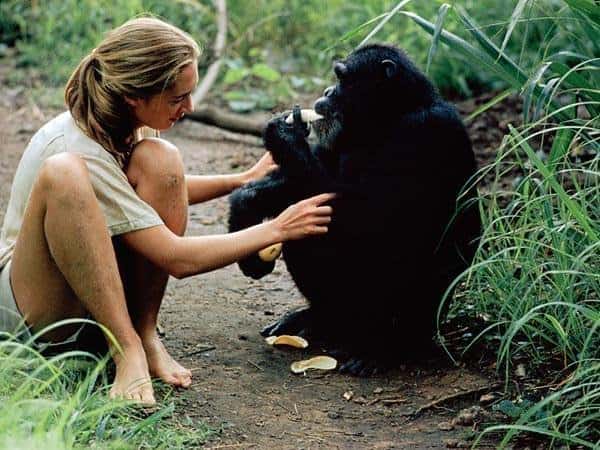Becoming (friends with) Jane: How Technology Can Create a More Intimate Experience
Last winter break, I was visiting my family in Virginia when my mom suggested we go see Becoming Jane, a traveling exhibition organized by the Jane Goodall Institute at the National Geographic Museum in Washington D.C. She had visited previously with her sister, and knowing my penchant for animals, figured that I would enjoy it. I was familiar with Jane Goodall and her work with chimpanzees, but I was eager to learn the details. What I did not expect was how immersive the exhibit would be and the impression it would leave on me.

We were first introduced to Jane through a fairly typical beginning-of-gallery-video which gives some brief context about her life and the makeup of the exhibit itself. At the end of the video, however, a chimpanzee swings from a branch and jumps out of the screen, inviting you into the exhibit and into Jane’s life.
After learning about her childhood and path to Tanzania to study chimpanzees with anthropologist, Louis Leakey, we entered a re-creation of her tent. It was just big enough to house her and her mother (who had to accompany her because it was unthinkable to allow a young English woman to travel alone) and outlined their early life in the bush, the set-up of their camp, and fights against malaria. Altogether, the tent put the visitor in Jane’s shoes and offered a peek into her experience. It felt, in a sense, like we had been transported to the Gombe National Park to live with Jane and study the chimps ourselves.

On the other side of the tent, we were invited to sit around a camp-fire where a holographic image of Jane was waiting to share stories about the chimpanzees. She reminisced on her first friend in the community, a chimp she affectionately calls David Greybeard, and how she first gained trust with him. By doing so, she created a sense of camaraderie with the audience. I felt much more connected to Jane listening to her holographic avatar than I would have watching TV screen or reading a block of text. It felt personal and helped established even more of a sense of trust towards her and her work.
The crown jewel of the exhibit followed: a virtual reality re-creation of her first close encounter with David Greybeard. We shuffled into a room wearing 3D glasses, surrounded by a virtual jungle. The experience carried us to a clearing where David and another chimpanzee sat grooming each other. Despite some slight double vision and a climate controlled space, the experience was so immersive that it felt like we were actually sitting in the jungle earning their trust. I briefly considered moving to the Gombe to dedicate my life to primatology before remembering that even most suburbs are too rural for me. Regardless, the VR experience helped forge a connection with the chimpanzees that would carry throughout the rest of the exhibit and the weeks following.

The next room had many interactive stations, like augmented reality binoculars to learn more about their observed behavior and tool use. There was a communication station where visitors could practice pant-hooting with the chimpanzees, something I was too embarrassed to try. Through a mixture of interactives, objects, and good ol’ fashioned text, the gallery highlighted the lives of chimps and interrogated our understandings of the concept of humanity. The exhibit ends by discussing the threats to chimps and a call to action for visitors to small changes to their lifestyles that can positively impact the environment.
Before Becoming Jane, I was an animal lover. I appreciated chimpanzees, but took no particular interest in them. Throughout the course of the exhibit, my fascination grew so much that I bought one of her books in the gift shop to learn more. I felt a connection with Jane, like she was an old family friend telling me stories. It can be difficult to create bonds between visitors and subjects, but Becoming Jane used immersive technology to tell engaging stories more successfully than I have ever seen.